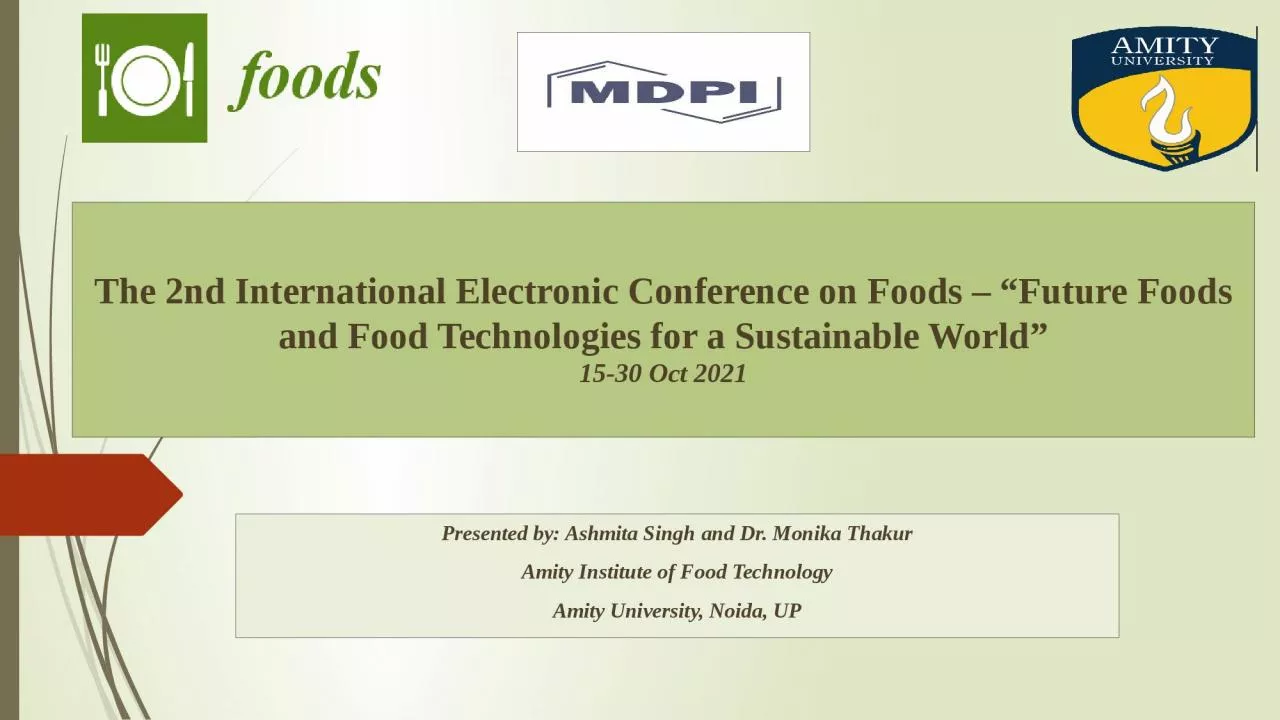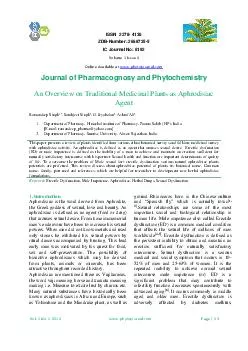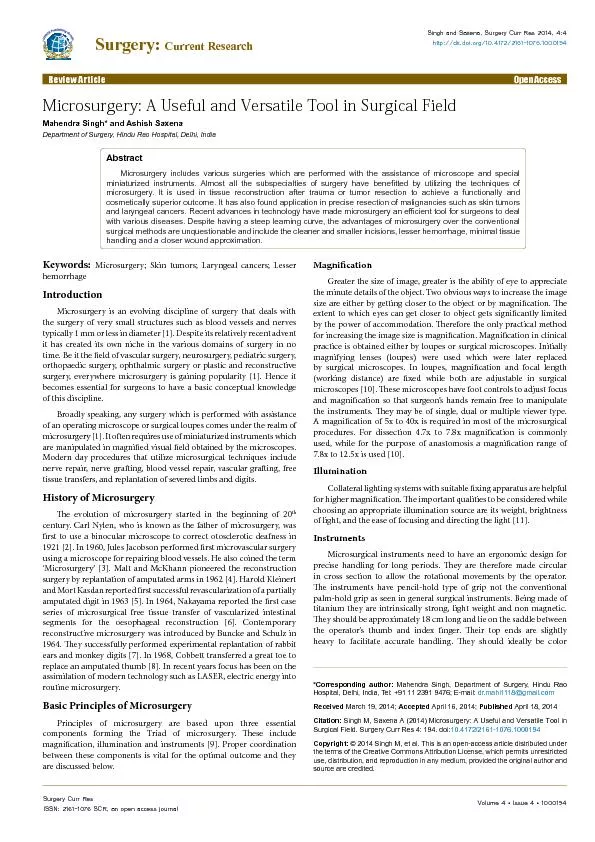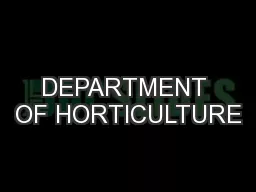PPT-Presented by: Ashmita Singh
Author : delcy | Published Date : 2024-02-09
and Dr Monika Thakur A mity Institute of Food Technology Amity University Noida UP The 2nd International Electronic Conference on Foods Future Foods and Food Technologies
Presentation Embed Code
Download Presentation
Download Presentation The PPT/PDF document "Presented by: Ashmita Singh" is the property of its rightful owner. Permission is granted to download and print the materials on this website for personal, non-commercial use only, and to display it on your personal computer provided you do not modify the materials and that you retain all copyright notices contained in the materials. By downloading content from our website, you accept the terms of this agreement.
Presented by: Ashmita Singh: Transcript
Download Rules Of Document
"Presented by: Ashmita Singh"The content belongs to its owner. You may download and print it for personal use, without modification, and keep all copyright notices. By downloading, you agree to these terms.
Related Documents














